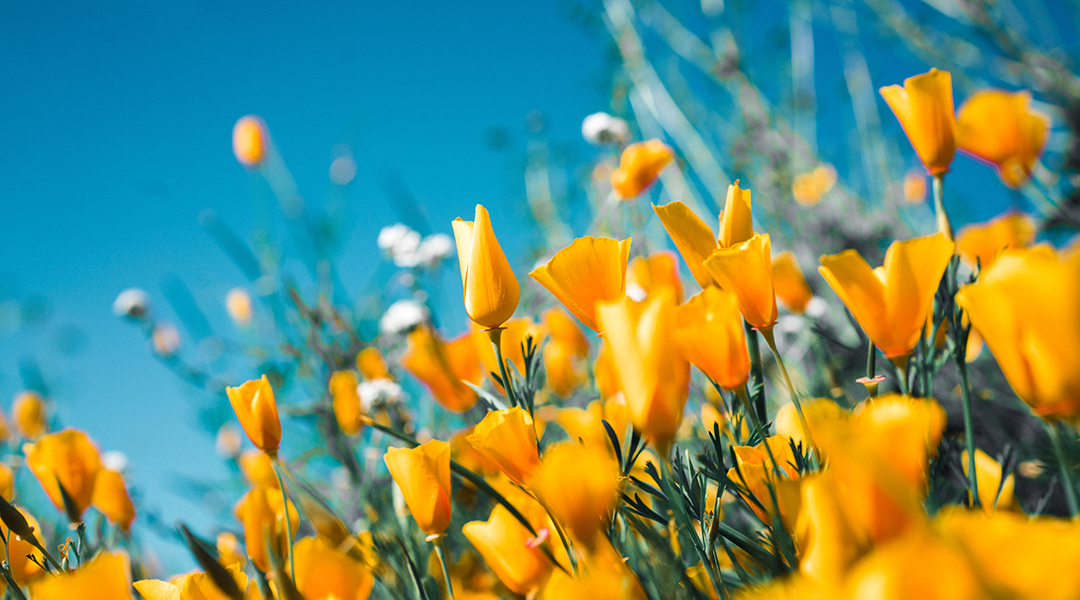Have you ever wondered how plants determine the direction of light without possessing eyes or any organ devoted to sight?
A research team led by Christian Fankhauser, professor at the Center for Integrative Genomics at the University of Lausanne, has recently uncovered the mechanism through which plants “see” and “chase” the sun as soon as they germinate — the answer is in the air!
In their study published in Science, the researchers used Arabidopsis thaliana, a plant commonly used in genetics research, to uncover a new mechanism by which plants perceive light and bend their primary stem to optimize light capture for energy production.
“It all started with the observation of a mutant whose stem was surprisingly transparent,” said Fankhauser. The mutant he referred to was a “blinded” version of Arabidopsis thaliana, which they created by applying a chemical agent — ethyl methane sulfonate — that introduces mutations in the DNA on the seeds. As a result, even in the presence of a light source, these plants grew straight upwards instead of bending towards the light.
“We found that the natural milky appearance of the stems of young plants was due to the presence of air in intercellular channels,” explained Fankhauser. These channels form a network that run through the inside of the plants’ stems.
Harnessing refraction
Martina Legris, a postdoctoral fellow in Fankhauser’s group and co-first author of the study, explained that these air-filled channels enable the stem to establish a light gradient that can be “read” by the plant.
The team discovered this occurs as a result of a phenomenon called refraction. Light does not travel at the same speed through air and water, and when it moves between media of different densities, this causes a change in its direction. Within the stem, light refracts due to the boundary between air from the channels and water found in cells.
Legris explained that this is the same phenomenon that produces rainbows after sunlight passes through water droplets in the air. Plants use refraction that occurs internally between air and water to be able to detect the light and determine the direction it came from.
Genetic testing identified that blind plants had mutations in a gene called ABCG5 that contains the instructions to make a sort of air pump, which eliminates air filling the channels. “Now we need to know how exactly the protein encoded by [the gene ABCG5]works, and find out what other genes are needed to form these intriguing channels,” said Frankhauser.
Though the study was done in Arabidopsis, the researchers showed that other plants, such as Brassica, a close relative of canola, depend on air channels to position its leaves to capture the most light, a phenomenon known as phototropism. “We therefore think that these channels are required for phototropism in many plant species,” said Fankhauser.
“Sensing light direction in plant embryonic stems depends on these air channels,” he added, “which is interesting because it differs from previously known light-sensing mechanisms in other organisms […] such as animals or bacteria. It is fascinating to observe that nature evolved a number of different ways to address an important need for many organisms: the capacity to sense light direction.”
Oxygen in a pinch
These intercellular air channels are present not only in plants’ primary stems, but also in other plant organs as well, including leaves, stems, and roots — and their functions go beyond just light capture.
“Some plant species that grow in flooded areas have specialized tissues [containing air channels] where there is much more air between the cells,” said Fankhauser.
Plant roots primarily obtain oxygen from the air rather than from water. During floods, soil is saturated with water, making breathing difficult. In the root system, “intercellular air channels are really important to ensure sufficient access to oxygen,” said Funkhauser.
Studying how these air channels are formed could help scientists understand how crops grow and adapt to changes in the environment. “A characterization of the protein missing in the blind mutant — the air pump — could provide an entry point to address this matter,” said Fankhauser.
“We are studying a fascinating biological question that may lead to practical applications but still far from application to agriculture,” he concluded.
Reference: Ganesh M. Nawkar et al., Air channels create a directional light signal to regulate hypocotyl phototropism, Science (2023). DOI: 10.1126/science.adh9384
Feature image credit: Sergey Shmidt on Unsplash

















